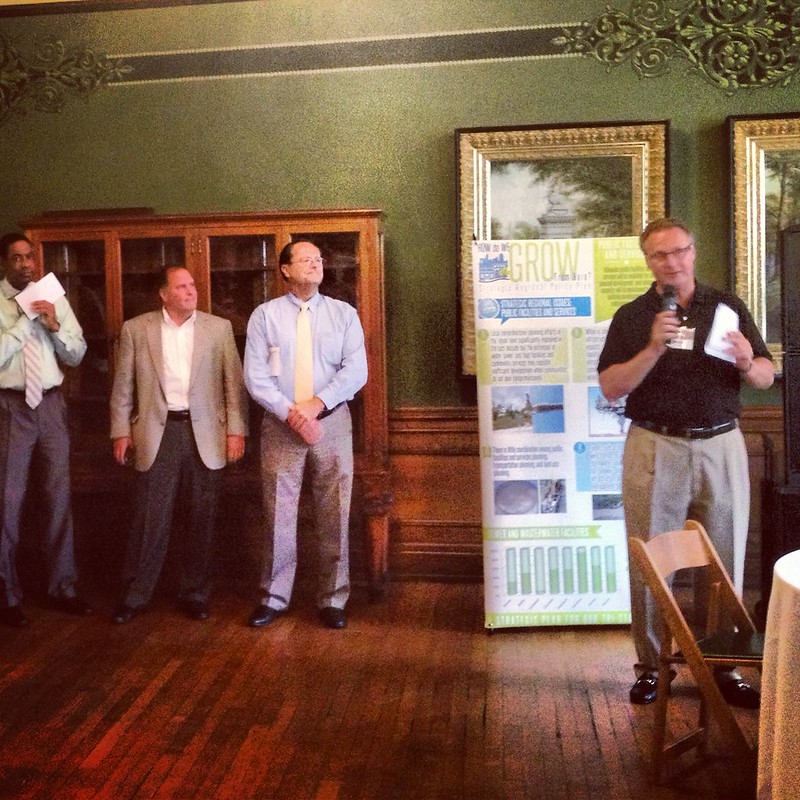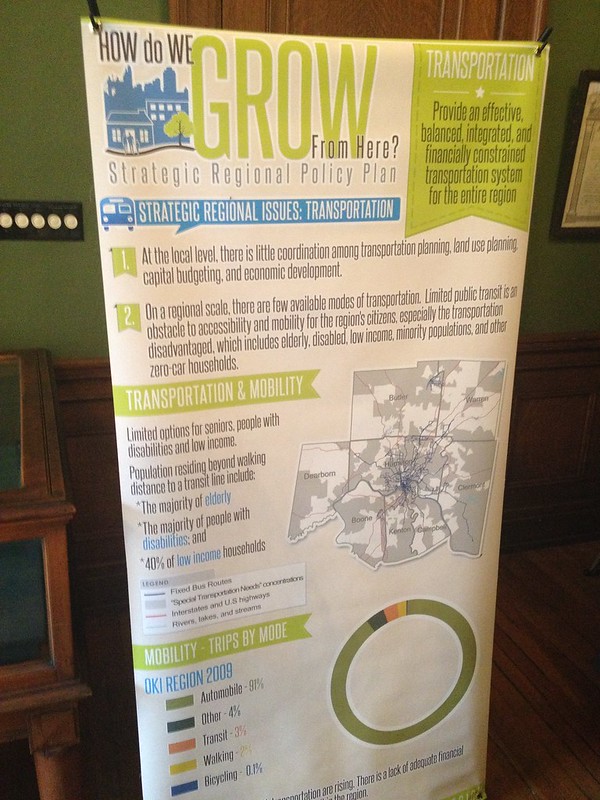 |
| OKI Executive Director Mark Policinski introduces the findings of the Strategic Regional Policy Plan |
The survey was a combination of input from local official and public participation, which looks at long-range land use and transportation planning at the regional level. OKI's Policy Plan focuses on timing, location and cost of development, and redevelopment. Topics included at the meeting highlighted: transportation, public facilities and services, natural resources, housing, and economic development. To make this information easier to understand for the layman, OKI's team put together some simple infographics to sum up the study.
A few things that I learned:
- There is major fragmentation of political, legal, and land use authority in the region, including wide variations among state planning laws, which causes difficulty with regional development.
- Land is being developed in the Cincinnati region at nearly twice the rate of our population growth. By 2040, we are projected to have a 22% increase in population from today's nearly 2 million residents. The result is a decrease in population density and population movement toward communities farther away from current centers of population and employment.
- Nearly 75% of Cincinnati households spend more than 25% of their income on transportation costs. Clermont, Warren, Boone, and Dearborn counties spend nearly 30% on transportation.
- Limited public transit is an obstacle to accessibility and mobility for the region's elderly, disabled, low income, and minority citizens.
- We are expecting a population shift with a 5% increase in senior citizens and a 3.8% decrease in wage earners under age 65.
- Major demographic shifts are creating needs for new types of housing, infrastructure, modes of travel, health care and community services, and are not always considered when communities make land use decisions.
- By 2030, electricity costs will increase by 50% as the region is expected to have 3 to 4 times as many days with a temperature over 90ºF.
- Long term maintenance costs for aging infrastructure make it a challenge for communities to serve existing demand while enabling economic growth.
For more information, check out the detailed Strategic Regional Policy Plan.




